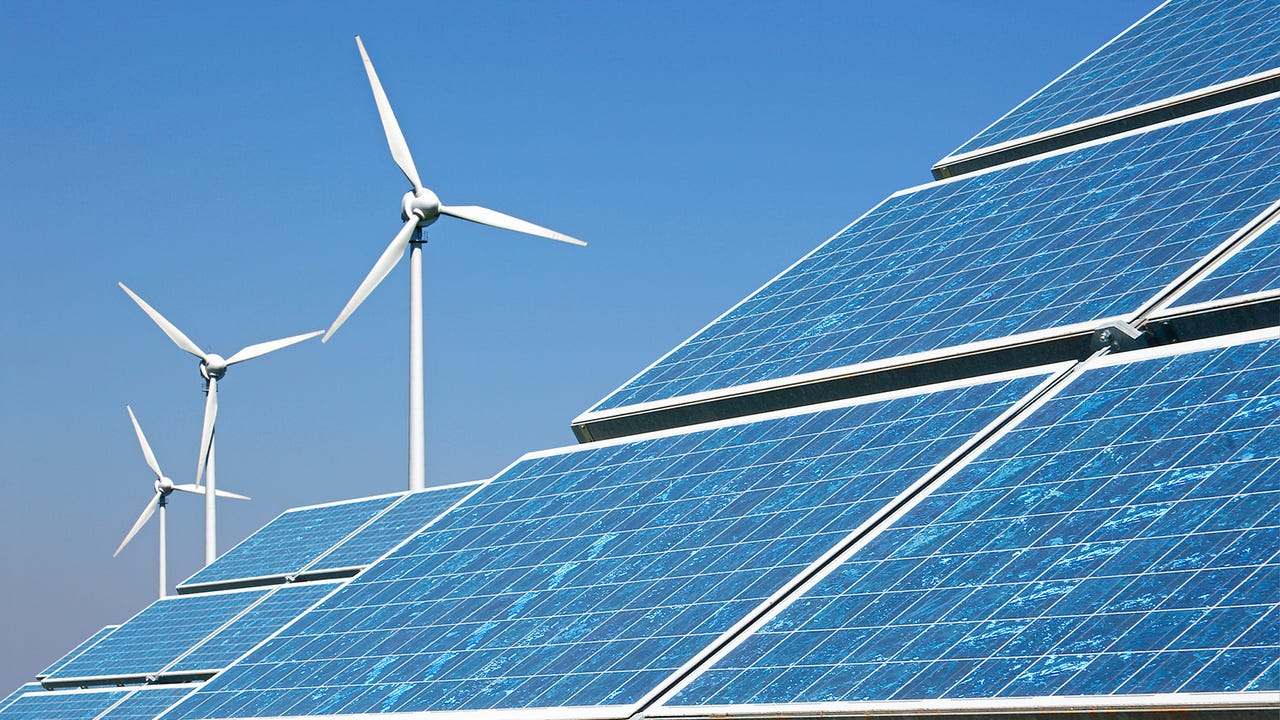































 P. Steeger / Getty Images
P. Steeger / Getty Images Estimates suggest technology is one of the biggest contributors to rising carbon emissions. But as well as contributing to the problem, technology can be a key weapon in the fight against climate change. Can we innovate our way out of trouble via technical fixes, and which are the key mitigation technologies? Here are five top candidates.
Technology has a key part to play in the solutions for building a better global economy. And, tech companies themselves are moving rapidly to become better citizens and change agents. Here's what we can learn.
Read nowThe IPCC's Climate Change 2022: Mitigation of Climate Change report noted that continued high rates of emissions mean that excess CO2 removal is now required to reach net zero emissions in the required timeframe. According to the Center for Climate and Energy Solutions, at least 26 commercial-scale carbon capture projects were operating around the world as of 2020, with 21 more in early development and 13 in advanced development.
The need to move to renewable energy sources will drive plenty of future innovation: in November 2021, data science/information company StartUs Insights analysed 5,152 startups and scaleups to get a picture of the key developments.
The biggest impact, this research revealed, will come from advanced photovoltaics, AI and big data, distributed energy storage systems and hydro power, followed by wind energy, bioenergy, grid integration, green hydrogen, advanced robotics, and blockchain.
Rechargeable batteries will provide an efficient way of storing renewable electricity on grids of various sizes, as well as powering electric vehicles and all manner of digital devices. According to the UK's Royal Society, new lithium ion batteries will deliver lower cost, extended life, enhanced energy density, increased safety, and faster charging, and they will also be more sustainable, easier to recycle, and last longer. Next-generation batteries -- including sodium ion, multivalent-ion, redox flow, solid-state, metal-sulphur and metal-air -- should have even lower costs and substantially higher energy densities.
The IPCC's Climate Change 2022 report notes that "Digital technologies can contribute to mitigation of climate change and the achievement of several SDGs [Sustainable Development Goals]. For example, sensors, internet of things, robotics, and artificial intelligence can improve energy management in all sectors, increase energy efficiency, and promote the adoption of many low-emission technologies, including decentralised renewable energy, while creating economic opportunities".
Also: Business travel, energy consumption in the spotlight as sustainability jumps up the agenda
However, the report also notes the potential negative aspects of multiple 'smart' sectors, including growth in digital device usage, increased e-waste, job losses, and an exacerbated digital divide. "Digital technology supports decarbonisation only if appropriately governed," the IPCC concludes.
In order to identify priorities and formulate policies, reliable and timely information on greenhouse gas (GHG) emissions is required. That's where projects like Climate TRACE, a Google-funded global non-profit coalition, comes in, deploying AI and machine learning to analyze data from over 300 satellites, more than 11,000 air-, land- and sea-based sensors, and additional public and commercial information to provide a global independent inventory of GHG emissions based primarily on direct observation.
In November 2022, during the COP27 conference, Climate TRACE released emissions data for over 70,000 sites -- including power plants, steel mills, urban road networks, and oil and gas fields. These sites are the top known sources of emissions in the power sector, oil and gas production and refining, shipping, aviation, mining, waste, agriculture, road transportation, and the production of steel, cement, and aluminum. Among the top countries that report their oil and gas production emissions to the UN, Climate TRACE found that emissions were as much as three times higher than self-reported data.
Also: Samsung aims to reach net zero carbon emissions by 2050
"In the next year, Climate TRACE will expand and refine its facility-level inventory from at least the top 500+ sources of emissions per sector represented in the Q4 2022 edition of the inventory to cover every major industrial-scale source of emissions in the world," the non-profit coalition said.
 Hot Tags :
Home & Office
Sustainability
Hot Tags :
Home & Office
Sustainability